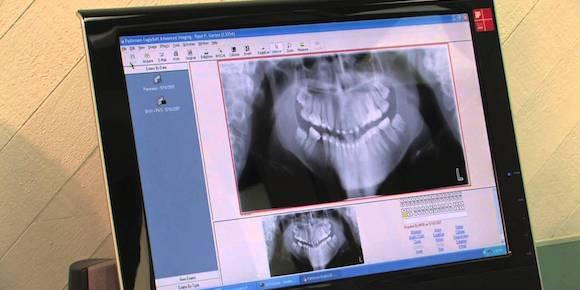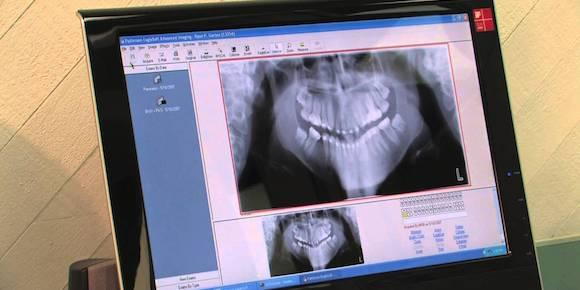
 System and user errors result in many EHR-related dental claims.
System and user errors result in many EHR-related dental claims.
Electronic health records (EHRs) are a collection of health records that present a comprehensive picture of an individual’s health. Records that are a part of that collection include electronic dental records (EDRs) and electronic medical records (EMRs). The end goal for EHRs is to have all of a patient’s information available for use by any healthcare provider or, in an aggregated form, for use in population health.
While many see the interaction between computers and healthcare as something that has occurred in the past 25 to 30 years, it actually started in the 1950s. Robert Ledley, DDS, and Lee Lusted, MD, co-authored the paper “Reasoning Foundations of Medical Diagnosis,” which attempted to leverage computer power to make a diagnosis.1 From these early beginnings, the clinical decision support system has evolved into an integral part of the EDR and EHR.
While hospitals and medical offices have adopted EMRs at rates of greater than 80 percent, the dental community does not have the financial incentives to adopt electronic records that have been extended to the medical profession. These financial incentives are made available for eligible providers who can demonstrate that they have made meaningful use of the records through a validation process administered by the Centers for Medicare and Medicaid Services (CMS). Recently, the medical community was informed by CMS that there will be financial penalties for those who do not switch to electronic records; however, the mandate does not apply to dentists.
A review of dental closed claims by The Doctors Company in which electronic records were listed as a contributing factor showed that system and user factors resulted in the majority of those EHR-related claims. User-related issues were present in 60 percent of the claims reviewed. Those were problems primarily associated with hybrid records/conversion from paper records, training and education, and use of copy and paste techniques. System-related issues contributed to the remaining 40 percent—mainly due to fragmented EDRs and other technology and design issues.
Case Example: Conversion from Paper Records
A practice was in the process of migrating from a paper record system to an EDR system. During the transition, a patient missed his follow-up appointment after a procedure the previous week. Due to the ongoing conversion process, the missed appointment was not noted. Several days later, the patient sought emergency treatment for a developing complication. If the missed appointment had been noted, appropriate contact could have been made with the patient to bring him in for the necessary follow-up care.
Case Example: Fragmented EDRs
A patient was referred to a dental specialist who reviewed the digital x-rays that were sent to the office. With the patient’s consent, the dentist decided to immediately proceed with a procedure. After beginning the procedure, the dentist noticed that the dental features of the patient did not match what was observed on the x-rays. Further examination revealed that the x-rays that had been provided to the specialist belonged to another patient. In this case, a fragmented EDR was a contributing factor. This may occur when several standalone systems are utilized to deliver dental care. It can also occur when information is imported from one provider to another.
Summary
While the total number of dental closed claims that have an EDR system as a contributing factor is small, these claims will become more prevalent as more dentists switch to electronic records. The early trends suggest that the EDR will parallel the EHR in the type of risk to their respective healthcare providers.
Risk Management Strategies
- Research the EDR systems that are available. Speak to other dentists in your area to discuss their positive and negative experiences with their systems.
- Ensure that all staff members are adequately trained in how to use the EDR. Consider how you will incorporate training for new hires.
- Validate the information entered in the EDR. Verify your patient’s identity before charting. Check to be sure that documents to be scanned and added to the EDR belong to the correct patient.
- Be cybersecure. Take the necessary administrative, technical, and physical steps to maintain the security and privacy of your EDR system.
References
- Mendonca, E. Clinical Decision Support Systems: Perspectives in Dentistry, J Dental Education 2004; 68:6, 589-597. http://www.jdentaled.org/content/68/6/589.full.pdf
By Donald Wood, CRNA, CPHRM, Patient Safety Risk Manager II
Reprinted with permission. ©2017 The Doctors Company. For more patient safety articles and practice tips, visit www.thedoctors.com/patientsafety.
The guidelines suggested here are not rules, do not constitute legal advice, and do not ensure a successful outcome. The ultimate decision regarding the appropriateness of any treatment must be made by each healthcare provider in light of all circumstances prevailing in the individual situation and in accordance with the laws of the jurisdiction in which the care is rendered.
